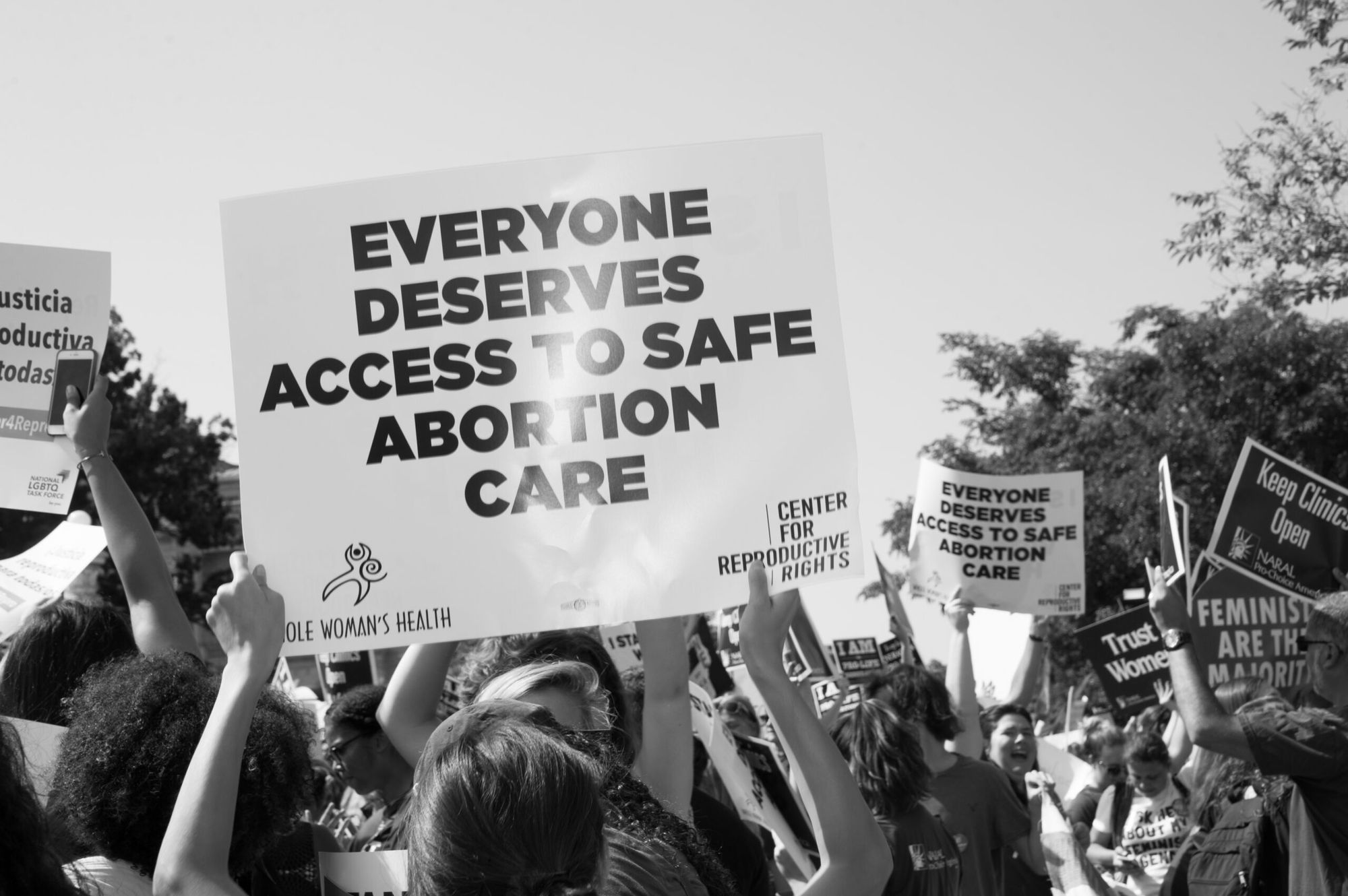Canada doesn’t guarantee the legal right to an abortion. It also doesn’t guarantee access to abortions. That needs to change.
Abortion was effectively legalized in Canada in 1988 thanks to the Supreme Court case R. v. Morgentaler, which found that criminalizing abortion violated the right to “life, liberty and security of the person,” as set out in the Charter of Rights and Freedoms.
That made Canada one of the few countries in the world with no abortion laws on its books — nothing restricting it, but nothing promising it either. It’s that lack of a promise, and subsequent efforts to make sure it’s fulfilled, that has made life difficult for those looking for an abortion.
As it currently stands, abortion access is inadequate throughout the country. As such, the federal government needs to take a more active role in ensuring that abortion becomes a right, and everyone who wants one can get one.
Here’s what’s wrong with abortion access in Canada as it stands, what a better example in the world looks like and how we can get there.
A Patchwork Of Regulations
As Passage columnist Nora Loreto has explained, abortion access in Canada is fundamentally unequal. All abortion is insured through the Canada Health Act, but provinces are free to set their own restrictions.
Prince Edward Island and Yukon don’t offer abortions after 12 weeks and six days; Manitoba, New Brunswick, Newfoundland and Labrador, and Nova Scotia don’t offer abortions after 16 weeks; nowhere in Canada routinely performs abortions after 24 weeks and six days. Medical abortions with Mifegymiso, a non-surgical option, are available up to nine weeks into the pregnancy, but after that point only surgical options remain.
Hospitals and clinics offering abortion tend to congregate in bigger cities, so rural and remote residents have to travel for hours or days to access healthcare. The abortion is covered, but other associated costs — like travel, accommodation, food and lost income — aren’t, creating additional barriers to care.
If you’re past the provincial cut-off point, you’ll have to travel out of province. If you’re past 24 weeks, you have to travel to the United States and it may or may not be covered by provincial insurance. Ontario doesn’t cover the extra expenses associated with traveling to the U.S., and it’s unclear (though unlikely) whether other provinces do.
Some abortion access that we take for granted is incredibly recent. You weren’t covered for abortions performed outside your home province until 2015. P.E.I. didn’t have any on-island abortion providers between 1982 and 2017. Mifegymiso has only been prescribed since 2017, and required mandatory ultrasounds — unfeasible in rural and remote communities — until April 2019. And Saskatchewan, the last province to get on board, only agreed to cover the full cost of non-surgical abortions in June 2019.
Provinces have to cover the cost of abortions performed in private clinics, or face financial penalties. Despite this, a 2014-15 Health Canada report noted, “In Prince Edward Island and New Brunswick, [abortion] services are only covered if performed in a hospital […] accessibility and comprehensiveness concerns remain because neither province covers private clinic abortions.” This remains true.
The most recent 2019-20 Health Canada report, meanwhile, also mentions that in Ontario “some individuals have been charged to access surgical abortion services in private clinics.” The money charged to patients in Ontario is apparently “facility fees”: while the procedure is covered by provincial health insurance at any clinic, only four private clinics have their fees covered by the province’s Independent Health Facilities Act.
So, what access to abortion looks like varies wildly by province. You may have to travel a long way, or to a different province, to get medical treatment that should be free and local.
What A Better Functioning System Looks Like
Let’s compare Canada to Sweden, a country of 10 million people, of which about 12 per cent live in rural areas (compared to around 18.5 per cent of Canada’s population). Sweden has a somewhat similar healthcare system to Canada, where the federal government regulates healthcare and it is delivered by local areas.
Sweden’s current abortion legislation is the 1974 Abortion Act, which promises that an abortion is a free choice on behalf of the pregnant person up to 18 weeks. Between 18 and 22 weeks, pregnant people must apply to the National Board of Health and Welfare to access an abortion.
The country has around 130 clinics or hospital departments that provide abortion care. In comparison, Canada, with a population more than 3.5 times greater than that of Sweden, has around 148 providers.
Many medical terminations before nine weeks are carried out by midwives as part of their broader sexual and reproductive health responsibilities. And two-pill medical abortions, which became available in Canada in 2017, have been available in Sweden since 1992.
There’s no conscientious objection, meaning medical professionals are obliged to perform all legal procedures. There’s also arguably less of a stigma around abortion than in Canada: a 2017 Ipsos poll found 87 per cent of Swedes support abortion in some or all circumstances, compared to 77 per cent of Canadians
Unfortunately, there is an up-front user fee associated with accessing health services, which is capped at 1,100 SEK ($160) per year; an abortion may cost up to 700 SEK ($102).
There’s no such thing as a country with perfect abortion law, so it’s up to Canada to look at things Sweden does well (more accessibility to clinics, abortion enshrined as a right, supportive social attitudes) while keeping the best parts of our current system, namely free at point of access.
How We Fix It
Currently, abortion rights are defined negatively — people have the right not to have the state interfere with their rights. This should be changed to a positive right: abortion is itself a right, not just on paper but in practice.
As anti-abortion movements attempt to gather ground in both the federal Conservative party and various provincial parties, defending this right, and increasing access to abortion, looks increasingly essential. Here are a few suggestions.
First, the federal government could pass a law to affirm abortion as a fundamental right,
Some activists are split on whether this would help — the logic is that if there’s a law with a set upper limit on abortions, it could be amended and eroded. There’s no legal cut-off point for Canadian abortion when defined as a negative right, just a practical enforcement of how late provinces will offer terminations. But a cut-off date doesn’t need to be included in any new federal law. (Sweden’s abortion law was introduced without an upper limit and still technically doesn’t have a cut-off date, though the fact that it has since been appended down to 22 weeks in practice does show that this is a valid concern.)
Yet introducing a law would give the federal government the chance to define how abortion should look. It could raise the number of clinics required per province, and create a bare minimum standard for the number of abortion providers. This would help prevent situations like Alberta, where there’s only three clinics that offer elective surgical abortions (in Edmonton and Calgary) for a province of more than 4.3 million.
In order to staff more clinics, there needs to be more training. The federal government could do this by putting pressure on Canadian medical schools to make abortion training mandatory.
A 2015 factsheet published by Medical Students for Choice found abortion training in Canadian medical schools was often limited or optional. Training more physicians to be able to carry out abortions means that more hospitals or clinics could offer the procedure. Better training in Canada could also help get rid of stigma within the medical establishment that’s still associated with “abortion doctors.”
Training more physicians will also help with the ongoing struggle of rural access. There are plenty of hospitals equipped with obstetrics or surgery wings that could offer abortions if they had the staff and expertise.
According to 2019 research from Action Canada, there are no rural providers in Alberta, Manitoba, New Brunswick, Northwest Territories, P.E.I., Saskatchewan or Yukon. But there’s plenty of places where abortions could happen: in Alberta alone, there’s facilities in at least eight smaller towns that have the capacity to offer abortions.
So increasing training, and mandating that some percentage of hospitals with pre-existing obstetrics or surgery programs must offer abortions, could help increase rural and remote access.
The federal government also needs to compel the Canadian Medical Association to change its conscientious objection practice.
Currently, physicians can refuse to offer abortions for moral reasons. This includes primary care providers refusing to dispense Mifegymiso. Ontario is the only province that forces physicians to provide an effective referral to patients for someone new who will offer the disputed service. Everywhere else effectively leaves it to patients to find a new care provider, which causes an interruption to healthcare.
While barring conscientious objection might be ideal, Canada’s health care system has a great deal of religious hospitals. There’s a far less contentious midpoint: amend conscientious objection to include imperatives that, no matter a practitioner’s moral beliefs, they must at least provide their patient with an appropriate referral.
Finally, federal pressure has long been the preferred method of solving provincial healthcare disputes. That was the point of the Canada Health Act, which allowed them to deduct funds from provinces that didn’t play ball.
This has already happened with regard to abortion, to a limited extent. For example, the feds withheld $140,000 of funding from New Brunswick in 2020 to cover unfunded private clinic abortions. It was later reinstated due to COVID-19. P.E.I., despite having the same restriction on non-hospital abortions, hasn’t seen any financial penalty.
The federal Liberals clearly agree that some provinces are breaking the rules. But they’re not doing anything about it beyond token measures: $140,000 is peanuts in a provincial healthcare budget of more than $3 billion.
The penalties could be ramped up to help put pressure on provinces to comply with the rules already in place. It will be even more useful going forward, as widening the scope of what counts as abortion care in legislation creates rules, and deducting funds from provinces who flout the regulations will then be enforcement.
Canada’s assumption has long been that abortion doesn’t need to be legislated and regulated: the right to non-interference is enough. But decades of incremental progress and limitations has taught us that it’s not. It’s long past time to put a positive right to abortion into writing, and the guarantee to access into practice.







